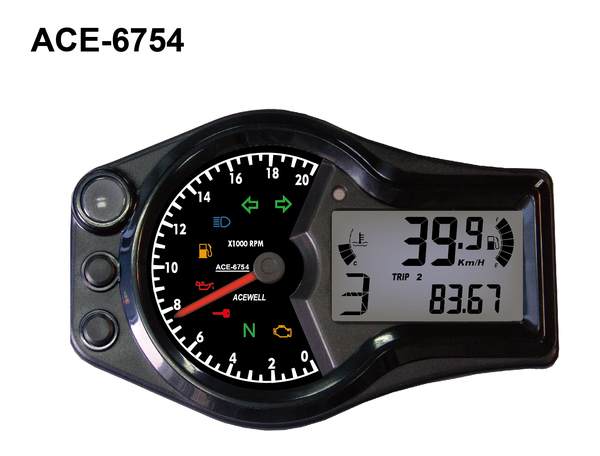The Significance of a Tachometer in Keeping An Eye On Engine Speed and Efficiency in Automotive Applications
In the world of automotive engineering, the tachometer stands as a crucial instrument in the driver's collection, supplying a direct window into the internal functions of an automobile's engine. Past its feature as a plain scale of transformations per minute (RPM), the tachometer offers as an important tool for enthusiasts and specialists alike, offering real-time insights right into engine performance and wellness.
Significance of Keeping An Eye On Engine RPM
Checking engine RPM, or transformations per min, is a critical element of automobile upkeep and efficiency assessment. Engine RPM straight associates with the rate at which the engine's crankshaft revolves, indicating exactly how promptly the engine is running.
In addition, keeping track of engine RPM is important for efficiency analysis in racing and high-performance automobiles. Preserving ideal RPM levels is vital for achieving peak power output and velocity. Racers commonly use tachometers to guarantee they are running within the excellent RPM array for optimum performance. In recap, checking engine RPM is not just vital for identifying problems yet additionally for optimizing engine efficiency in various vehicle applications.

Advantages of Real-Time Data
In automobile applications, real-time information plays a critical function in offering instant insights right into the efficiency and problem of the car. By continually keeping an eye on numerous criteria such as engine rate, temperature level, gas consumption, and a lot more, real-time data supplies many advantages that add to enhanced efficiency and safety and security when driving.
Furthermore, real-time data facilitates performance optimization by offering instant feedback on driving behaviors and engine efficiency. Motorists can readjust their behavior in real-time based on this information to accomplish much better fuel economic situation and extend the life expectancy of their vehicle.

In addition, real-time information plays a crucial role in modern-day automobile diagnostics, allowing professionals to promptly identify and attend to breakdowns. This leads to minimized downtime, reduced upkeep prices, and ultimately, boosted overall automobile integrity and longevity (tachometer). By utilizing the power of real-time data, automotive stakeholders can make informed decisions that positively affect both the performance and durability of the vehicle
Effect on Equipment Shifts
The tachometer plays a critical duty in optimizing equipment shifts by providing real-time engine speed information to the chauffeur. When approaching the redline on the tachometer, it signifies the motorist to upshift to stop over-revving the engine and causing potential damages.
In addition, the tachometer aids in achieving smoother equipment changes, specifically in hand-operated transmissions. By monitoring engine speed, vehicle drivers can implement equipment changes at the optimal RPM range, decreasing snagging motions and lessening endure the transmission elements. This precision in gear modifications not just enhances driving comfort however also adds to sustain effectiveness.
Enhancing Gas Performance
Offered the crucial role the tachometer plays in optimizing equipment shifts for performance and engine health, it straight adds to optimizing gas efficiency in automotive applications. By providing real-time responses on engine speed, the tachometer helps vehicle drivers in maintaining one of the most reliable RPM array for gas economic situation. When chauffeurs regularly check the tachometer and adjust their driving behaviors accordingly, they can avoid unneeded gas intake brought on by over-revving or lugging the engine.
Moreover, the tachometer helps motorists identify the most fuel-efficient gear to be in at any view it now type of given moment, stopping the engine from functioning tougher than needed. In final thought, the tachometer offers as a valuable device in boosting gas effectiveness by advertising optimal driving habits and determining areas for improvement in the car's efficiency.

Maximizing Engine Longevity
The tachometer's duty in keeping an eye on engine rate and efficiency contributes in making sure the long life of vehicle engines. get more By making use of the tachometer successfully, motorists can enhance engine durability via mindful RPM management. Constantly revving an engine too high can bring about too much wear and tear on crucial components, such as the pistons, valves, and bearings. Gradually, this can lead to lowered engine efficiency and prospective breakdowns. Monitoring the tachometer permits chauffeurs to remain within the suggested RPM variety for their car, stopping unneeded stress on the engine and expanding its life-span.

Final Thought
Finally, the tachometer plays a crucial role in keeping an eye on engine rate and efficiency in vehicle applications. By giving real-time information on RPM, it permits efficient gear shifts, enhanced gas efficiency, and maximized engine long life. This device is crucial for preserving optimum engine efficiency and ensuring the total capability of an automobile.